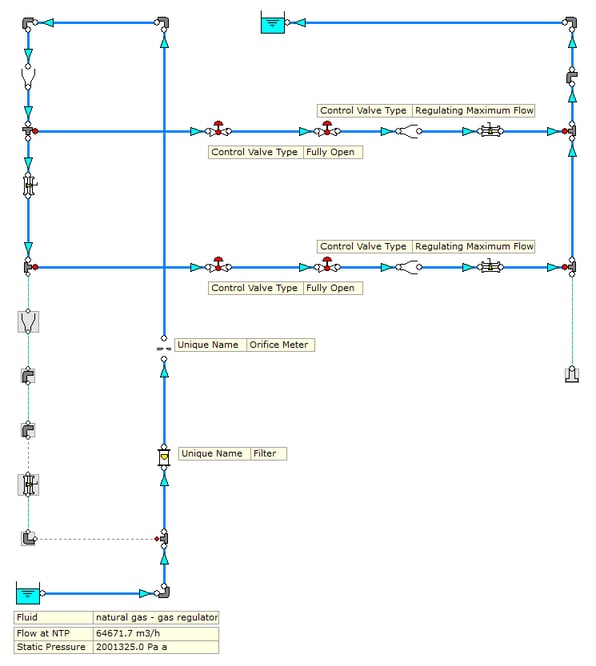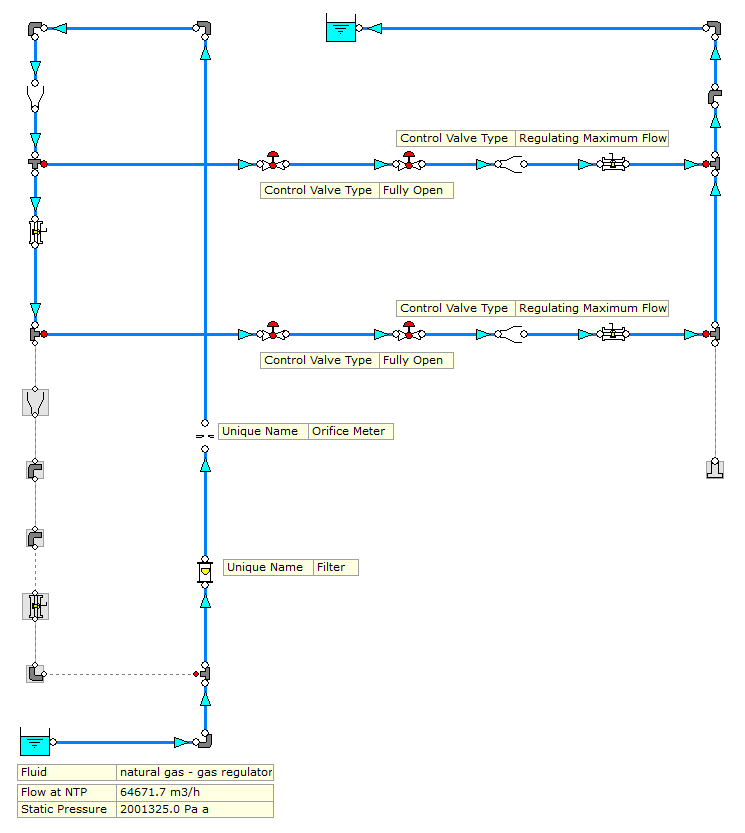
Gas Distribution Systems & Pressure Regulator Stations
Natural gas distribution or utility systems are used to deliver natural gas to customers across different sectors including residential, commercial and industrial. Natural gas distribution pipelines tend to operate at higher elevated pressures which enables the gas to travel long distances via a network of underground pipework. This high pressure, although beneficial for delivery over long distances, is unsuitable for end-users and therefore needs to be reduced gas regulator stations to a lower pressure which customers can receive and use.
Gas pressure regulators are used to maintain a constant and reduced pressure. The regulator adjusts the opening position so that the gas flow through the station is matched to the system demand. As demand on the system is increased, the regulator flow also increases. In the case where demand on the system reduces, the flow through the regulator also decreases as the regulator reacts to the increase in system pressure. In general, the regulator attempts to match the flow of gas through the station to the demand for gas imposed on the system whilst ensuring the regulator maintains the pressure within acceptable limits.
Gas transportation and distribution companies often need to model gas regulator stations (city gate stations, district regulator stations etc) to ensure they are operating within their available capacity. Additionally, it is also helpful to be able to determine if any stations are approaching their full capacity and from this study, identify any upgrade requirements. This analysis can be carried out before the winter months and where upgrades are required, these can then be planned and completed in time to meet the required or anticipated winter load demand.
FluidFlow software includes a regulator component that allows gas transportation or utility companies to calculate the flow of gas and pressure loss through a gas regulator station. Heat transfer can also be considered as well as the Joule-Thomson effect. The software can be used to maintain the accuracy and reliability of hydraulic gas station models created to simulate gas regulating stations and customer station facilities.
When developing station models, engineers can include the relevant pipes and fittings including filters, gas regulators etc. Bypass lines can also be modeled.
Gas regulators can be modelled using either the ISA or Universal Equations.
Figure 1 gives an overview of an example gas regulator station.
-

Gas Regulator Station.
Fortis BC in Vancouver have successfully used FluidFlow software for a number of years to model their gas regulator stations.
References:
- Leading Practices to Reduce the Possibility of a Natural Gas Over-Pressurization Event, American Gas Association (AGA).
